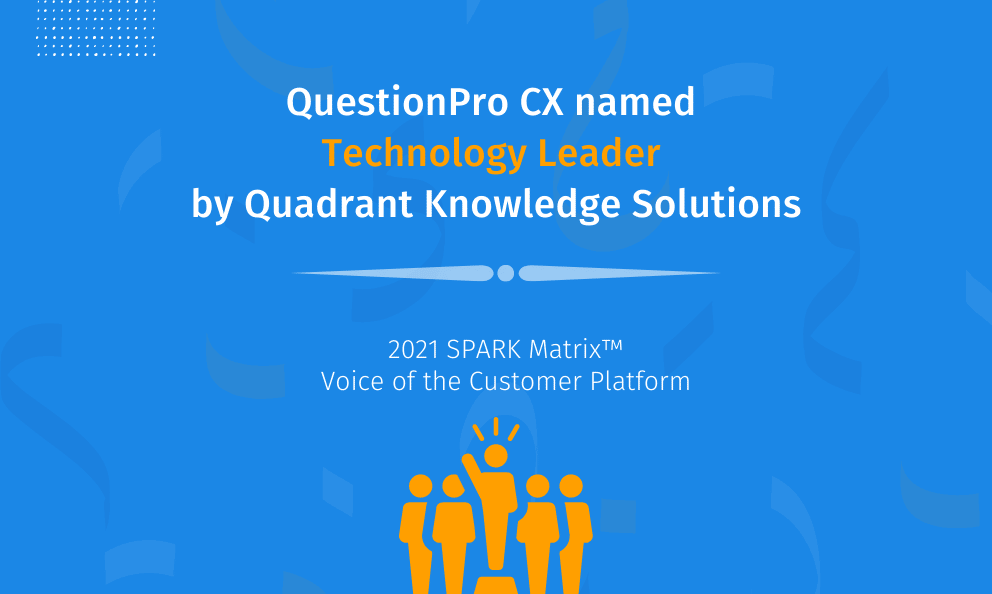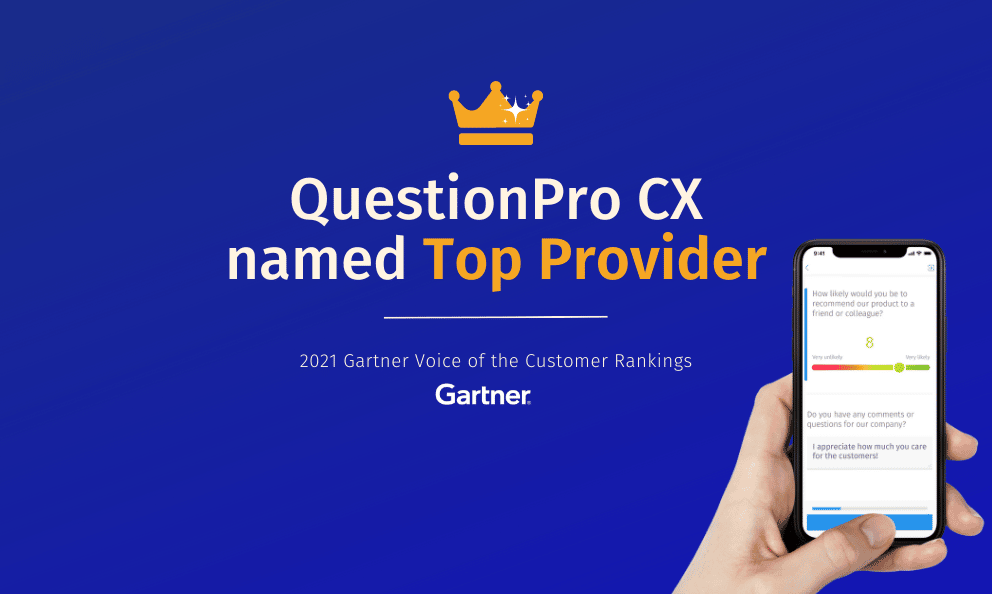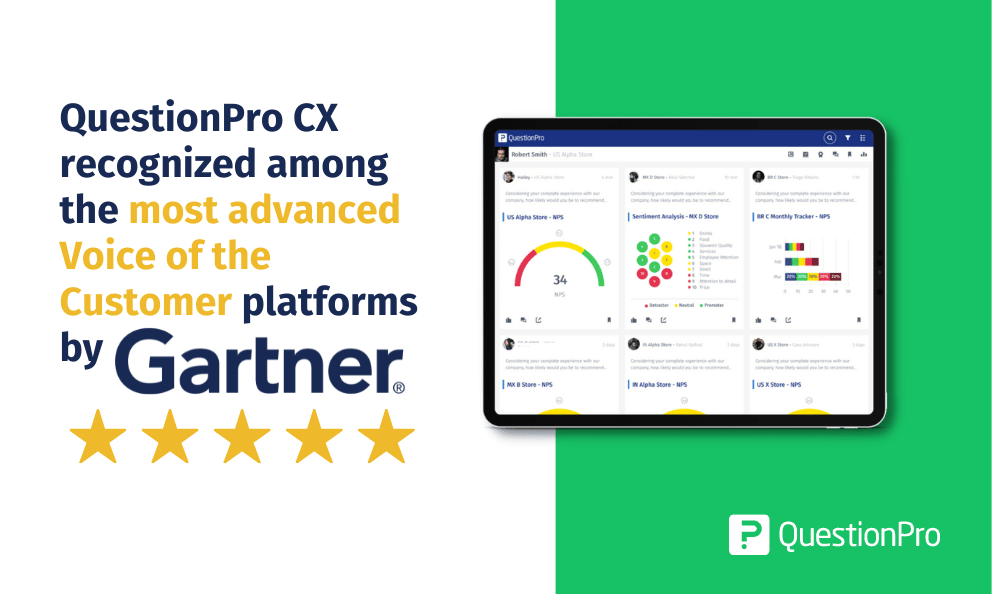Think about the last time you had a great experience with a brand. Maybe it was a quick response to a complaint, a product improvement you actually requested, or just a feeling that the company understands you.
Today, customers expect brands to listen—and not just listen, but actually do something with the feedback they share. VoC is all about creating that two-way street between businesses and customers. It helps you understand what your customers really think about your products, services, and overall experience.
With over 90% of companies already competing based on customer experience, it’s no longer enough to guess what your customers want. The good news? You don’t have to guess. A well-run VoC program gives you direct answers. It tells you what’s working, what needs fixing, and how you can build loyalty by giving people exactly what they need, when they need it.
In this guide, we’ll break down what Voice of Customer means, why it’s important, and how you can start using it to strengthen your business.
Voice of Customer (VoC) is a term widely used in market research that describes your customers’ feedback about their experience with your products and services. VoC is about the customer experience they have had while purchasing something from your brand or availing services.
Voice of Customer is a platform that mainly focuses on what the customers need, what exactly their expectations are from your brand, and a strong communication platform to tell the brand if their product needs improvement.
With 90% of the companies already using customer experience to compete with one another, you don’t want to fall behind as a brand or an organization. Most of the new-age companies and their CEOs are focused on making their brand “high-growth” with a customer-focused mindset. Does your brand have what it takes to compete with such businesses?
The voice of the customer can be heard through a variety of different platforms, such as interviews, focus groups, etc. However, with the technological advancements, VoC can be conducted on a much larger scale because of the internet.
Online surveys, emails, SMS, and social media platforms help you gather customer feedback. This helps you build a complete picture of the experience you are delivering to each of your customers.
Once this information is obtained in a statistical data format, it can be delivered to the business or organizations so they can make informed decisions.
There are many reasons why Voice of Customer is extremely crucial to a business or an organization. However, there are some important reasons why VoC plays a crucial role in any business:
- Voice of Customer is the first step, even before an organization starts working on an appropriate marketing plan. The management may have a feeling that a product will perform extremely well in the market. VoC quantifies the guts. Real data from the customers will eliminate any doubts, and a strategy or a plan can be implemented in a similar way.
- It’s a fact that if you know your customers well, there are very few chances that you will fail. In a competitive landscape, understanding your customer needs is extremely important; they will buy what they need, not what you want them to buy. Received proper feedback from your customers will help you make informed decisions that align with the needs of your customers.
- Another very important reason why the voice of the customer is important is that market research always helps eliminate any risk. Whenever quantitative or qualitative research is conducted, statistical data is obtained based on the research, and numbers never lie. Through the gathered data, it is easy to understand if any risk is involved with the product and analyze how to eliminate that risk.
The insights provided through a customer-centric program need to be acted upon quickly. Remember if the data is collected and not acted upon the entire purpose of having that data is defeated
Here are the 4 benefits of implementing Voice of Customer program:
- Helps improve your service: Customer feedback is a very important tool in not only improving the product but also the services provided by the brand. An impeccable customer service ensures, your customers are going to return to you for the way you have treated them. Not only will they be a returning customer they are most likely to refer your brand to their friends and family, thus making your Net Promoter Score (NPS) incline towards more number of promoters.
- Understanding and Managing your brand: As a brand, you need to understand how your customers perceive your brand. With a constant check on your brand status, you can keep a good reputation in the market while growing your market share. Provide direct means of communication to your customers and they are less likely to pull you into a discussion on social media platforms.
- Stay ahead with development and innovation: Hearing the voice of customer will help you keep pace with the latest development and innovation and will help you stay a step ahead in understanding what your consumers want and what are they willing to pay for these developments. Remember customer feedback will always help you improve your product and know the future trends.
- Market Fit: Listening to the voice of the customer will help you know perceptions in the adopter stages itself. Launching a new feature or a totally new product in the market first to the beta consumer will help you understand your target audience and also if you fit the bill or not. Voice of customer is an efficient tool in hitting the market at the right time with the right product!
The value of retaining an existing customer over acquiring a new one is significantly higher. Below are seven key methods to collect the voice of the customer.
- Surveys
Surveys can be conducted online or offline, depending on the network connectivity of the respondents. You can use a free, ready-made survey template to save on time and effort or create your own questionnaire.
- NPS: Net Promoter Score (NPS) is a score calculated based on how likely the customers are to refer your business to their friends or family. These surveys are generally short and often have one NPS question followed by an open-ended question.
- Feedback forms: Feedback forms are more descriptive than the NPS survey and request answers for a wide range of questions.
- Customer satisfaction surveys: Customer satisfaction (CSAT) surveys are an effective mechanism to get customer feedback for the quality of your products and services. You can use a combination of matrix or multiple-choice questions to get the maximum out of your CSAT questionnaires. Data from these surveys is crucial to understand which areas need looking into and make timely improvements to elevate customer experience and customer satisfaction. Check our detailed blog on the importance of CSAT surveys for more details.
- Customer effort score (CES) surveys: Customer Effort Score (CES) is calculated by conducting surveys that measure the ease of operating for a brand's product or service. The respondents rate the ease of operation on a rating scale of 'extremely very difficult' or 'extremely easy.
- Social media
Social media channels like Facebook, Instagram, Facebook, etc., give you the option to upload pictures and videos, write feedback, and view comments posted by other users. This is important to gather key insights into what people are expecting, what the problem areas are, etc. A bad review can cost you existing customers and potential customers; stay on top of customer feedback on social media channels.
- Live chats
An absolute necessity for all brands with websites and apps, live chats are an excellent way to gather instantaneous and candid feedback from your visitors. It helps understand if the website has navigation issues, does not have support collateral, etc. This timely information helps in avoiding further issues.
- Customer interviews
Voice of Customer interviews are done in person; however, they can also be done through one-on-one calls and emails. The interviewer asks a set of questions to the customer and notes down the responses.
- Focus-groups
In this voice of the customer method, 8 to 10 customers are selected to form a group. Apart from their answers, qualitative data such as their expressions, feelings, body language, and emotions are also noted.
- Web intercept surveys
Website intercept surveys are online surveys that gather customer information about their intent and online experience. Some key objectives of website surveys are:
- Understanding visitor intention and journey
- User satisfaction of website and user experience
- Research and website usability understanding
- Emails
Emails can be used to gather feedback when the sample audience is small. The benefit of this Voice of Customer method is that people can respond to an email at their convenience.
A good voice of the customer program helps you better understand customers’ choices, concerns, and preferences. However, it is not enough to collect customer feedback through surveys. What makes the difference is how the survey data is analyzed, and more importantly, how businesses use the insights generated by a Voice of Customer program.
Building a successful Voice of Customer (VoC) program requires more than just sending out surveys. It involves setting clear objectives, engaging the right teams, and turning feedback into meaningful actions. Below are key steps to help you design and implement a VoC program that delivers real business value.
- Have clear goals:
Before starting the program to collect customer feedback, ensure you have clear goals outlined. List down what you want to achieve by the end of the program.
- Involve stakeholders:
Involve the right stakeholders at every step. Create sub-accounts in survey software so that the other team members can contribute to survey creation and distribution.
- Share the reports:
Share the reports with different teams so that everyone can benefit from the results.
- Integrate with third-party apps:
Integrate survey software with other applications such as CRMs, marketing automation tools, and data visualization tools to explore multiple dimensions of survey responses.
- Measure the ROI
At the end of the Voice of Customer program, measure the ROI to evaluate the success and whether you should repeat the program in the future.
Once you have the insights ready, it’s time to put them into action! Respond to the concerns of the customers and take steps to improve customer satisfaction and loyalty. Identify the bottlenecks in providing the best customer experience and how it can be further enhanced.
For your VoC programs to be a success, you need to understand and overcome these critical challenges.
- Gather data and use it
Do not conduct surveys just to take some tasks off your list or meet some targets. You conduct customer surveys, and you receive loads of information and insights. Use that goldmine to improve your CX initiatives. How good is your NPS score? Is the Net Promoter Score considered good with respect to the NPS industry benchmarks? How can you improve it? The customer feedback that you will gather through surveys should be shared with your teams, and all the teams need to work towards a common goal collectively.
- Interpret the data
Having customer feedback and data is not enough. You need to analyze it closely, uncover patterns and trends that will arm you with data for future actions. Not being able to or not using customer feedback is worse than not collecting consumer feedback at all. Share the data with all the functions in the departments and let them analyze it. Let them figure out what it means for their department and how they can use it to improve customer satisfaction. Use customer experience management software such as QuestionPro CX to gather in-depth and significant insights from your customer data.
- Close the loop
You have customer complaints and negative feedback, yes. How have you addressed them? Are you creating and carefully looking at tickets? Closing the loop means responding or acting on the negative feedback received from your customers. It is the act of following up with your customers to address their negative feedback. You can use QuestionPro CX for closing the loop with your customers, either individually or collectively. Sign up to look at our closed-loop feedback mechanism in action.
- Show returnsShowing ROI or business returns on closing the loop is good for any business. Track and measure how your actions have impacted customer satisfaction, experience, and consumer loyalty levels. Loyal customers re-purchase from you and contribute a great deal to your brand's revenue. Conduct CSAT surveys to see your actions bearing fruit. This is important not only for management approval and presentation but also for boosting the morale of all functions and departments involved.
Businesses across industries are using Voice of Customer programs to turn feedback into actionable improvements. Whether it’s refining customer experience, boosting user satisfaction, or reducing churn, VoC tools help brands stay competitive by listening closely to what their customers actually need.
Here are two real-world examples of how organizations used VoC strategies to drive meaningful results.
- An airline company uses the Voice of Customer software to close the feedback loop and improve its services
A leading airline customer conducted a program to collect customer feedback and identify areas for improvement in their experience. The passengers were requested to answer a series of questions ranging from in-flight entertainment, comfort, meals, and crew service.
Once the survey answers were collected, the data was analyzed to get the pulse of customer feedback. The changes in the service delivery were made in real-time to maintain customer loyalty and prevent passengers from switching to their competitors. Such a customer-centric attitude from the airline helped them reduce the churn rate and maintain a dominant market position.
- A SaaS company using the voice of the customer tool to increase the number of users
Another example of how Voice of Customer software can benefit is that a popular SaaS company used an in-app survey to collect feedback from the users and usage data to improve the user experience. The company analyzed which features were being used the most and what new features users would like to see in the app.
The survey responses were filtered based on the number of parameters. The company realized that instead of having a one-size-fits-all package, there should be different pricing models to suit the needs of different users. Soon, they saw a surge in the number of users and a spike in their satisfaction level.
Survey Software Easy to use and accessible for everyone. Design, send and analyze online surveys.
Research Suite A suite of enterprise-grade research tools for market research professionals.
Customer Experience Experiences change the world. Deliver the best with our CX management software.
Employee Experience Create the best employee experience and act on real-time data from end to end.










